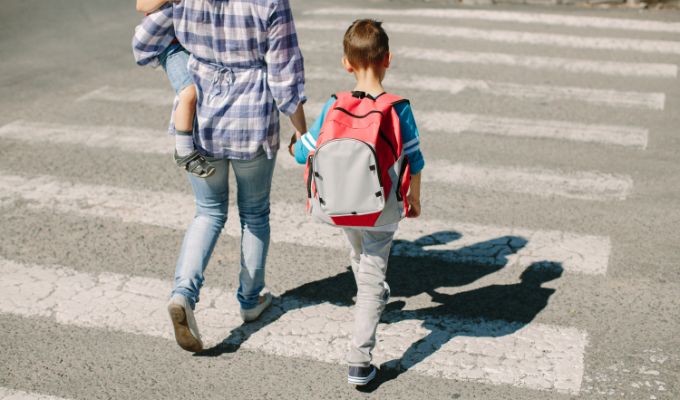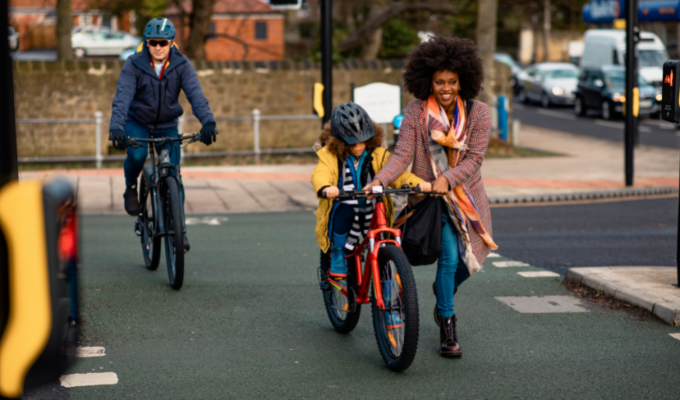The goal of teaching children about road safety in primary school is to make them more confident and capable future drivers.
Having the ability to instil road safety in children at an early age is crucial, but what exactly does it entail? Learn more about how to instil in your kids and students a sense of confidence when walking near roadways.
What is road safety education in Primary school?

The term “road safety for children” refers to the measures taken to educate children and students so that they can prevent harm while crossing or using public roads.
People on foot, cyclists, drivers, passengers in motor vehicles, riders on horses, and riders of public transportation that operate on roads are all examples of common road users.
Basically, the goal of traffic instruction in primary schools is to instil proper road etiquette in youngsters. Some parents may deem this unnecessary because they have already instilled safe road habits in their children. The goal is that all kids, homeschoolers and public schoolers alike, should enter school at the same level of readiness.
More: Tips for Parents on Teaching a Child to Ride a Bike
Does traffic education start in year 1?
Most programmes emphasising road safety start in year 1. For the simple reason that a lot of kids just want to skip out on their parents and head off to school as fast as they can. But for this to work, it’s crucial that parents have faith in their children’s ability to follow all traffic regulations and stay safe while doing so.
Primary schools have the last say on when traffic education should begin. A later start date of the second or third year is used by some schools.
Instruction on road safety in primary schools should focus on two main areas. At first, a type of training called “pedestrian training” is conducted. In theory, it all begins with signing up.
Afterwards, there will be an emphasis on mobility enhancement. Reaction time, focus, and sensitivity can all be improved with practice. The primary beneficiaries of this are elementary school children since they learn to navigate the roads independently and securely.
What exactly happens during pedestrian training?
The Green Cross Code is a popular curriculum used to instil safe road habits in young students. The Green Cross Code is one of the most widely recognised codes in the United Kingdom. It was established in 1970 by the National Road Safety Committee, the forerunner of today’s ROSPA (Royal Society for the Prevention of Accidents). The goal of the code was to encourage people in the United Kingdom to think more about pedestrian road safety.
Every day, this code of conduct encourages children to act in ways that keep them safe. What happens next is as follows:
- Think: Find the least dangerous crossing point.
- Stop: A full stop is required before the curb. Never enter traffic without first following the procedures outlined in the Green Cross Code.
- Look and listen: Check for oncoming traffic to the left and right. Don’t forget to remove your headphones so you can hear any road noise.
- Let any coming traffic pass: Wait for any approaching traffic to pass safely if you can see it or hear it coming from any direction.
- Arrive alive: Cross the street only when it is clear to do so, and keep an eye out for oncoming vehicles as you cross. Keep in mind that running increases the risk of injury, so it’s best to walk.
For sure, that’s the proper way to walk in the street, and everyone knows it. But young people aren’t in the know. They learn through example.
But you can’t assume that they had any idea what they were doing from this. They don’t have to understand the rules explicitly. That’s why it’s crucial to begin formal road safety teaching no later than the beginning of primary school.
Which implies you need to justify your roadside detour. Take a jog across the neighbourhood with the kids and, if possible, let them lead the way as you cross the street. In this approach, you can assess their practical application of the concepts you’ve been teaching them.
Traffic education
When your kids are in primary school, their expanded sphere of influence is a focus of the curriculum. This is because they are no longer merely pedestrians but may now ride bikes or take public transportation.
You’ll get a wealth of experience by figuring out how to function in the chaotic flow of ordinary life.
As a side note, it’s not uncommon for participants to receive a certificate upon completion of the course. The fact that their children have finished pedestrian training may come as a surprise to them.
Still, you should be proud of your kids when they bring home the certificate because it can assist keep them safe when they’re uncertain of their surroundings.
Children need to have confidence in themselves as drivers at some point. This requires not only knowledge of the rules, but also the ability to put them into practice.
To drive safely, you must not only master the art of judging safe distances from oncoming vehicles, but also the art of recognising when a particular vehicle has the right-of-way.
While many parents may believe they are adequately preparing their children for the realities of daily traffic, research shows that many children continue to be confused about what is and is not acceptable behaviour in the world of vehicular travel.
Child Independence
Confidence and competence in navigating traffic is an important parts of children’s development into mature adults. That, too, calls for regular rehearsal. Teaching proper conduct to children at a young age is crucial.
They’ll just absorb it as part of their upbringing. They can learn more about it in primary school through traffic education. And it provides you peace of mind as parents to know that your kids can handle the early commute without you.
Is there a bicycle test in traffic education in Primary school?
Indeed, several locations also have bicycle examinations. Learning to ride a bike is often taught alongside other road safety measures at various schools.
In 2007, the Cycling Proficiency Test was no longer administered. The Department of Transport’s National Standard for Cycle Training plan, which included a new programme called “Bikeability,” eventually replaced the old one.
The Cycling Proficiency Test began in 1947 (the Scheme was formally established in 1958) and continued until 2007 when it was superseded by Bikeability.
What is Bikeability?

The Cycling Proficiency has been superseded by Bikeability because of its greater relevance and modernity. It is designed to help young people acquire the skills they need to ride bicycles safely on today’s roadways. The training, however, is open to people of all ages.
Bikeability is an escalating programme that teaches people of all ages and abilities how to ride bicycles safely and with competence.
Where does primary school traffic education take place?
The school’s facilities will determine this. For traffic education in primary schools, several communities include a traffic training area. Children can practise driving under realistic circumstances here.
Many schools also provide traffic instruction via videos and quizzes as a substitute. That is primarily a theoretical issue. You may ask youngsters how they act in specific circumstances, but it’s another thing to see how they actually behave.
Why is road safety education so important in primary school?
When kids enter the classroom, they don’t all know the same amount. While some are always transported by automobile and can cross the street with ease, others are already quite adept at navigating the roads safely.
In primary school, students all participate in the traffic education lesson and come to a consensus at the conclusion. And because of this, they can safely and effectively negotiate the traffic. In the end, the objective is to assist students in understanding hazardous road traffic.



